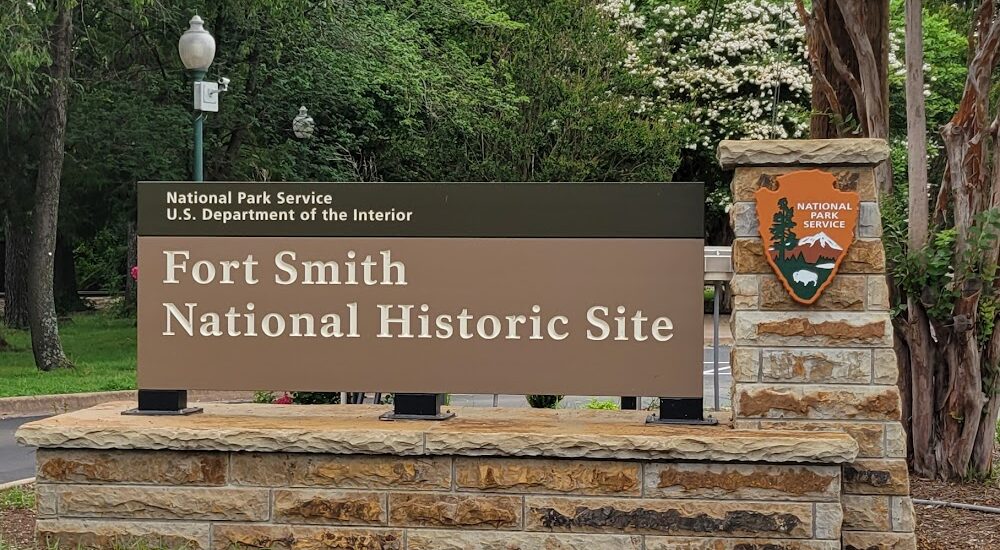Welcome to the Fort Smith National Historic Site, a place where the echoes of U.S. frontier history resonate through time. Established on the confluence of the Arkansas and Poteau Rivers, Fort Smith was founded in 1817 by a detachment of the U.S. Rifle Regiment. This strategic location, known as Belle Point, was selected for its beautiful vantage and potential to protect and oversee trade and military activities on the western frontier.
Fort Smith’s story is deeply intertwined with the Trail of Tears, the forced relocation of Native American tribes from their ancestral homelands to Indian Territory, now Oklahoma. In the 1830s, thousands of Cherokees passed through this region, marking it as a significant waypoint on their sorrowful journey.
The site also played a crucial role during the Civil War and the era of law enforcement that followed. The historic Commissary building, constructed in 1838, served as a military supply warehouse and later housed the chambers of Judge Isaac C. Parker. Known as the ‘Hanging Judge,’ Parker presided over the federal court from 1875 to 1896, bringing law and order to a region plagued by outlaws and bandits. His courtroom and notorious ‘Hell on the Border’ jail are part of the visitor experience today.
As you explore the site, you can walk the River Loop Trail, which follows the path of the Arkansas River, offering wayside exhibits that narrate the rich tapestry of events that unfolded here. The grounds of the second Fort Smith, constructed in 1851, still evoke the military drills of soldiers who trained here for the Mexican War and the Civil War.
Fort Smith’s evolution from a military fortification to a bastion of justice and a key player in the westward expansion reflects broader themes of American history, including the impact of Manifest Destiny and the often tumultuous integration of diverse cultures. Today, the site stands as a testament to these historical narratives, offering visitors a chance to reflect on the complex interplay of justice, migration, and frontier life.






